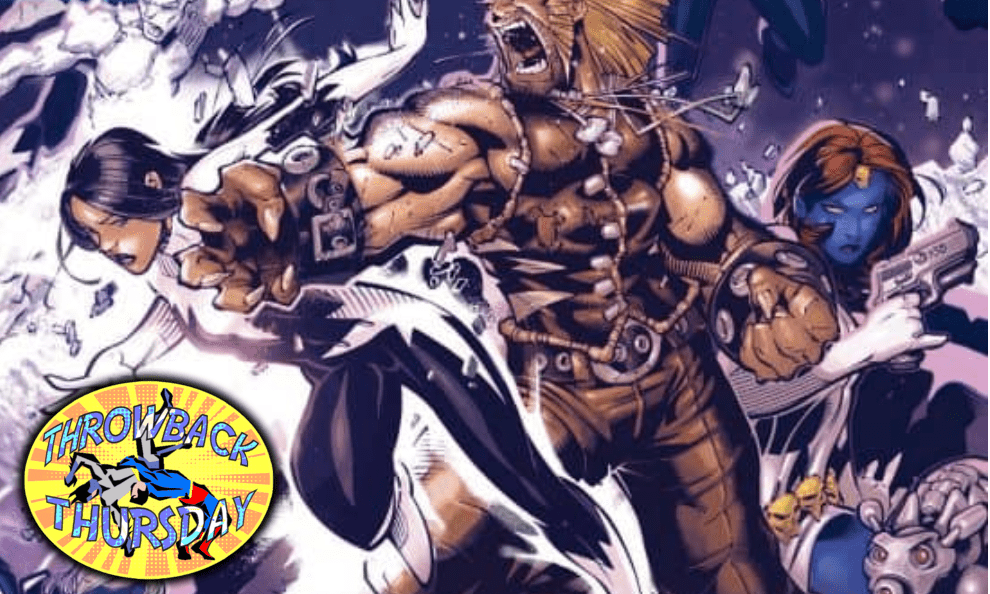Recap
Review
While at their heart the X-Men were conceived as an allegory for society’s tendency to fear the unknown, in the world of the Marvel comic universe, they are more literally a species one step further than mankind. Mutant is to man as man is to monkey. What happens, then, when you climb that evolutionary ladder another millennium? X-Men scribe Mike Carey asked that question in 2006 when he replaced Peter Milligan on the “adjectiveless” X-Men title. Carey’s inaugural arc, “Supernovas,” mixes high concept with riveting action in a story that set the tone not only for the British author’s run, but also for many mutant comics for years to come.
Carey asked the aforementioned question – what comes after mutants? – via a simple but fascinating plot device: time compression. The Vault, which has been revisited at length during the Krakoan era of the X-Men, was Carey’s brainchild to achieve this outcome. It is a place where time moves impossibly faster than on Earth, and life there bears all the evolutionary benefits of that fact. When one of the scientists behind the creation of the Vault commissions Sabretooth to kill everyone involved in its conception and shut the project down, the feral villain accidentally frees some of its long-gestating inhabitants. When he realizes how badly outmatched he is, Sabretooth goes to the one place he knows will offer him sanctuary post-M Day: the X-Mansion.
Conveniently, Cyclops had recently commissioned Rogue to put together a rapid response team to protect the mutant population, which had just been decimated by the Scarlet Witch. Carey used M-Day to make the team lineup his sandbox. While Marvel editorial had conveniently retained the mutant powers of most of the more popular X-Men, Carey nonetheless opted for the sort of team that only forms out of desperation. Rogue chose reliable elements in the form of Cable, Cannonball, and Iceman and rounded out the rest of the team with volatile elements. Omega Sentinel and Lady Mastermind join the fray after their rescue from inhumane experiments, while Mystique is invited by Rogue so her stepdaughter can keep a watchful eye on her. Sabretooth, ever the survivalist, stays on out of necessity. With friends like those, who needs enemies? Plenty of enemies would present themselves nonetheless throughout the run, starting with the Children of the Vault.
The Children’s powers (super strength, telepathy, etc.) are nothing groundbreaking, but the way they lap the mutants in terms of effectiveness makes them intimidating foes. After they manipulate Aurora and Northstar into attacking the X-Mansion to silence Sabretooth, the villains make their plan clear: wake the rest of the vault, and replace mutants and humans alike in the food chain. Their power levels back up their ambitions; in one memorable sequence, Cannonball is made to live 20 years of happiness with the group’s telepath in his mind only to be shaken from that dream and made to fight her.
When they realize Sabretooth has already spilled about who (and what) they are, the Children of the Vault descend on West Chester intent on wiping out all of its mutants. While their first attempts at stopping them go predictably sideways, Rogue’s X-Men soon prove a winning combination. Lady Mastermind and Mystique provide misdirections, Iceman and Cannonball raw power, Rogue and Cable tact, and Sabretooth, violence. Despite being decidedly outgunned, the (kind of) heroes pull out the victory at the end of a rip-roaring debut for Carey.
Intriguing as the plot of Supernovas is, Carey did not break much new ground. Just a few years earlier in New X-Men, Grant Morrison introduced the World, a tripper, more Grant Morrison take on a plane where time is sped up. Around the same time in the, shall we say, interestingly named X-Treme X-Men, Chris Claremont toyed with the concept of evolution beyond homo superior. Where Carey really distinguishes himself is in characterization. Carey’s Rogue was so well done that he would write the character almost exclusively for years to come in X-Men and X-Men Legacy. Mystique and Lady Mastermind are a treat as conniving, semi-reformed villains. Cannonball and Iceman, whose insecurities as X-Men are too often played up for characters with a combined age of 100, are portrayed at last as invaluable team members, while Sabretooth is at his best as a ruthless survivalist. All of these written elements are visually tied together by the brilliantly quirky art of Chris Bachalo, a legend in comics who particularly shines in the X-Men line.
Any avid X-Men reader who is punch drunk off Krakoan politics, is looking for a hidden gem, or simply needs a jumping off point for a reintroduction into Marvel’s mutants should check out Supernovas. The arc contains plot threads for no less than three equally excellent stories, and begins a stellar run by Carey that would last for the duration of the 2000s.
